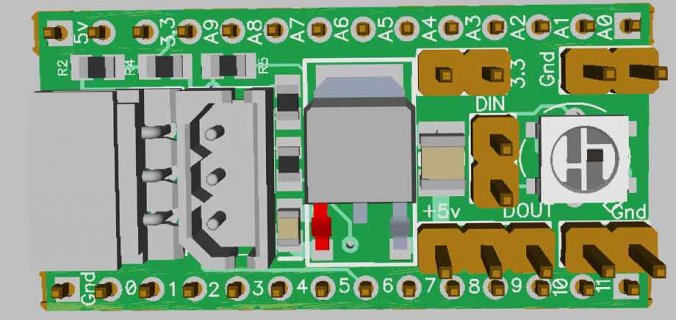Gibbynator
New member
First off, I am building a quadrotor using the Teensy 3.1 as a controller (because I'm insane). I figure I'll have a few questions along the way since I'm new to the Teensy.
I am currently using an 11.1V 3S 30C 4500mah LiPo battery to power the motors. It will still have plenty of juice left to power the Teensy, but the question is what is the best way to go about this? I was thinking of using an L7805 voltage regulator off the power board to connect it, but allowing 1A through the Vin sounds a bit dangerous. I figure a resistor or two after the thing would be a good idea. Is this the safest approach to delivering a stable Vin to the Teensy throughout the flight (I have an alarm already attached that will sound when the LiPo starts getting low). If so, what resistors would be best to use? Otherwise, is there a better way to do this or should I just get a 3.7v 1S LiPo and run the Teensy off that? I've seen plenty of Teensy LiPo chargers, but nothing that charges the Teensy from a LiPo. Also, is there a max Amps in I should be concerned about if it's best to just get a second LiPo, or does the internal Voltage regulator in the Teensy take care of that?
Thank you for your advice.
I am currently using an 11.1V 3S 30C 4500mah LiPo battery to power the motors. It will still have plenty of juice left to power the Teensy, but the question is what is the best way to go about this? I was thinking of using an L7805 voltage regulator off the power board to connect it, but allowing 1A through the Vin sounds a bit dangerous. I figure a resistor or two after the thing would be a good idea. Is this the safest approach to delivering a stable Vin to the Teensy throughout the flight (I have an alarm already attached that will sound when the LiPo starts getting low). If so, what resistors would be best to use? Otherwise, is there a better way to do this or should I just get a 3.7v 1S LiPo and run the Teensy off that? I've seen plenty of Teensy LiPo chargers, but nothing that charges the Teensy from a LiPo. Also, is there a max Amps in I should be concerned about if it's best to just get a second LiPo, or does the internal Voltage regulator in the Teensy take care of that?
Thank you for your advice.


